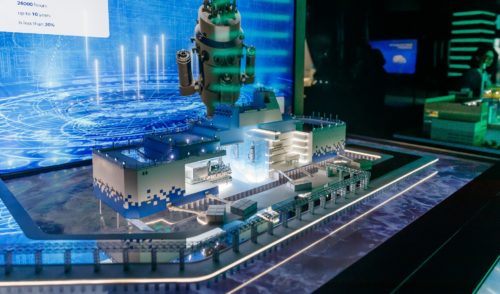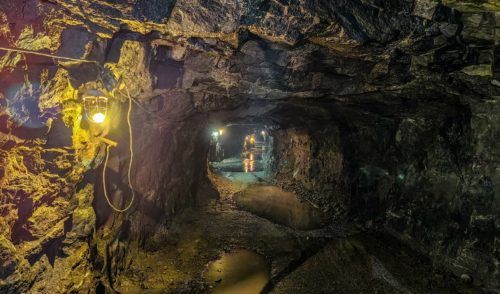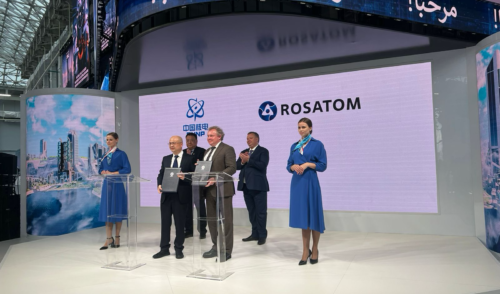
Reactor Vessel Put in Place at Belarus Nuclear Plant
back to contentsThe vessel was manufactured by Russia’s AEM Technologies (a subsidiary of AtomEnergoMash, Rosatom’s mechanical engineering division). It weighs more than 330 tons and measures 11 meters in length and 4.5 meters in diameter. Prior to the installation, the RPV passed incoming inspection in accordance with all regulatory requirements. Its engineering and supporting documents were checked for consistency and quality. Special equipment was used to perform visual, dimensional and other examinations. Once the incoming inspection confirmed the quality of the product, it was approved for installation.
The vessel was installed in two stages. First, it was lifted with a gantry crane and moved into the reactor hall by rail. Then the vessel was pulled by the polar crane into a vertical position and placed on the support ring inside the reactor pit.
“It takes almost surgical precision to mount a reactor vessel in its permanent position,” said Vitaly Mediakov, NIAEP Vice President for Belarus NPP Project. “Since the support ring bears the entire load, the gap between the axes of the vessel and the ring should not exceed one millimeter.”
“We have reached another milestone in the reactor construction,” notes Sergei Olontsev, Senior Vice President for National Projects at NIAEP. “Emplacement of the reactor vessel is a starting point for assembling the main circulation loop of the reactor.”
The new VVER-1200 is the most powerful Russian-built reactor at the moment. The key advantages of VVER-based units are high performance, long service life (60 years) and safety.
The Belarusian Nuclear Power Plant is based on one of the world’s most advanced designs and complies with the most stringent international regulations and IAEA guidelines. Novovoronezh II Unit 1 with the VVER-1200 reactor incorporates the AES-2006 design featuring a number of definitive advantages over the VVER-1000 reactor design. In particular, it provides for a 20% higher power capacity and a doubled service life (60 vs. 30 years) of its core components, a reactor vessel and a steam generator body. More important is that the new design is fully compliant with the post-Fukushima safety requirements.
The Russian AES-2006 design features an array of unparalleled safety systems. One of them is a core catcher, a unique safety device designed by Russian nuclear engineers to mitigate effects of a nuclear meltdown. Structurally, it has a cone-shaped body installed at the bottom of the reactor pit. In case of an accident, the core catcher medium mixes with the molten core materials and distributes them evenly inside the catcher body. The catcher can hold the molten core for an unlimited period of time, preventing nuclear materials from getting outside.
Stress tests passed
Last year, Belarus was reported to perform stress tests based on the specifications developed by the European Commission and the ENSREG (European Nuclear Safety Regulator Group). At present, the Belarusian regulator Gosatomnadzor is preparing a stress test report to be published and presented to the European Commission. Stress tests are aimed at checking the ability of nuclear plants to withstand extreme conditions and adapt to emergencies. The tests are designed to evaluate the resistance of nuclear plants to extreme impacts from outside, such as floods, harsh weather conditions, safety system malfunctions due to loss of power supply at the facility.
For more information about stress tests please read http://rosatomnewsletter.com/belarus-npp-all-safety-threats-under-control.html




